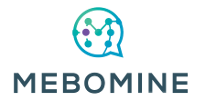


Cognitive navigation based on non-uniform Gabor space sampling, unsupervised growing networks, and reinforcement learning
- Arleo, F. Smeraldi and W. Gerstner, IEEE Transactions on Neural Networks, Vol. 15, No. 3, pages 639-652, May 2004
Abstract
We study spatial learning and cognitive navigation for autonomous agents. A state space representation is constructed by unsupervised Hebbian learning during exploration. As a result of learning, a representation of the continuous two-dimensional manifold in the high-dimensional input space is found. The representation consists of a population of localized overlapping place fields covering the two-dimensional space densely and uniformly. This space coding is comparable to the representation provided by hippocampal place cells in rats. Place fields are learned by extracting spatio-temporal properties of the environment from sensory inputs. The visual scene is modelled using the responses of modified Gabor filters placed at the nodes of a sparse Log-polar graph. Visual sensory aliasing is eliminated by taking into account self-motion signals via path integration. This solves the hidden state problem and provides a suitable representation for applying reinforcement learning in continuous space for action selection. A temporal-difference prediction scheme is used to learn sensorimotor mappings to perform goal-oriented navigation. Population vector coding is employed to interpret ensemble neural activity. The model is validated on a mobile Khepera miniature robot.
Website updated
09 Jan 2024
This website was written in Zim !